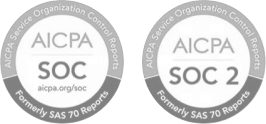Absenteeism Policy
Article Navigation
A written set of organizational rules and procedures governing employee attendance. This policy outlines acceptable reasons for absence, how to report or request time off, the process for submitting documentation, how attendance will be tracked, and the consequences of policy violations. An absenteeism policy helps ensure consistency, fairness, and legal compliance in attendance management.
Absenteeism
Absenteeism refers to the habitual or frequent absence of an employee from scheduled work without valid cause. It includes both excused and unexcused absences and can be disruptive to operations, team morale, and productivity. Chronic absenteeism is often used as an indicator of deeper issues such as low engagement, poor management, or personal stressors, and is typically managed through a formal absenteeism policy.
Excused Absence
An absence from work that is authorized by the employer and supported by adequate justification or documentation. Examples include medical appointments, personal or family illness (with a doctor’s note if required), jury duty, bereavement, or pre-approved time off. Excused absences typically do not result in disciplinary action if properly documented and reported in accordance with company procedures.
Unexcused Absence
An unauthorized or unapproved absence from work, typically without prior notice or supporting documentation. Unexcused absences may lead to progressive disciplinary actions depending on frequency and severity. Most absenteeism policies define thresholds for what constitutes excessive unexcused absenteeism.
No-Show / No-Call
A situation in which an employee fails to appear for work and does not notify their supervisor or HR department. It is typically treated as a serious infraction of company policy, and repeated or prolonged no-call/no-show incidents may result in termination of employment.
Tardiness
The act of arriving late to a scheduled shift or returning late from breaks. Tardiness is typically tracked as part of an employee’s attendance record. Patterns of consistent lateness may result in corrective action and are often classified separately from full-day absences in company tracking systems.
Early Departure
When an employee leaves work before their scheduled end time without prior approval or due cause. Like tardiness, early departures may count as partial absences and are generally tracked and reviewed for patterns indicating attendance issues.
Absence Tracking
The systematic monitoring and recording of employee attendance, including late arrivals, early departures, full-day absences, and leave taken under various policies. Effective tracking helps employers identify trends, manage workforce availability, and apply policies consistently across departments.
Documentation Requirement
The obligation for employees to provide supporting documents for certain types of absences. Common examples include a medical certificate for sick leave, a jury summons for jury duty, or a death notice for bereavement leave. Failure to provide required documentation may result in the absence being treated as unexcused.
Disciplinary Action
The measures taken by an employer in response to an employee’s violation of attendance policies. Disciplinary actions may follow a progressive format including verbal warnings, written warnings, formal performance improvement plans, suspension, and ultimately termination. All disciplinary actions should be documented and aligned with organizational policy and employment law.
Burnout
A state of physical, mental, and emotional exhaustion often resulting from prolonged workplace stress, excessive workloads, or poor work-life balance. Burnout may contribute to rising absenteeism rates and is a key consideration in identifying root causes of unplanned absences across the workforce.
Employee Engagement
The level of commitment, motivation, and emotional investment an employee has toward their work and organization. Low employee engagement is frequently correlated with increased absenteeism. Attendance trends are often monitored as part of broader efforts to measure engagement and morale.
Workforce Morale
The general attitude, outlook, and satisfaction of employees within the workplace. High morale typically results in better attendance, while low morale can manifest in frequent absenteeism, high turnover, and lower performance.
Paid Time Off (PTO)
A policy structure that allows employees a set number of paid days off each year to be used for personal reasons, illness, or vacation. PTO combines multiple leave categories into a single time bank, providing employees with flexibility while simplifying administration. A robust PTO policy can help reduce absenteeism by encouraging proactive time-off planning.
Leave Accrual
The process through which employees earn paid time off based on their length of service, number of hours worked, or other employment factors. Accrual policies vary by organization and may be prorated for part-time employees. Accrued leave typically rolls over into future pay periods unless a cap is applied.
Time Bank
A stored balance of leave hours an employee can draw upon when requesting time off. Time banks may be divided by category (e.g., sick leave, personal days, vacation) or consolidated under a general PTO policy. Time bank management ensures employees are taking leave in accordance with policy limits.
Attendance Reward System
An optional incentive program that recognizes or compensates employees for exemplary attendance. Rewards may include bonuses, extra PTO, public recognition, or other perks. The purpose of such programs is to promote reliable attendance and reduce the rate of unplanned absences.
Family and Medical Leave Act (FMLA)
A U.S. federal law that provides eligible employees with up to 12 weeks of unpaid, job-protected leave per year for specific family or medical reasons. Employers must ensure that their absenteeism policy aligns with FMLA regulations, including documentation, eligibility, and reinstatement rights.
Fair Labor Standards Act (FLSA)
Federal legislation that governs minimum wage, overtime pay, and classification of employees as exempt or non-exempt. Attendance and leave policies must comply with FLSA provisions, particularly when tracking hours worked for non-exempt employees.
Exempt Employee
An employee classified under FLSA guidelines as exempt from overtime pay. These employees are typically salaried and expected to fulfill responsibilities regardless of hours worked. Attendance policies for exempt employees often emphasize accountability and performance over strict timekeeping.
Non-Exempt Employee
An employee is eligible for overtime compensation under FLSA. These employees are typically hourly and subject to precise attendance tracking. Any unapproved or undocumented absences can result in wage adjustments and formal policy enforcement.
Legal Compliance
The requirement for all HR and administrative policies, including absenteeism, to comply with applicable labor laws, union agreements, and regulatory standards. Non-compliance can expose employers to litigation, fines, and reputational damage.
Audit Readiness
An organization’s ability to demonstrate compliance with labor laws and internal attendance policies during audits or legal investigations. This includes maintaining accurate records, proper documentation of absences, and a clear, consistently enforced absenteeism policy.
Absence Management Training
Instruction provided to supervisors and HR professionals to ensure they understand how to enforce absenteeism policies, handle time-off requests appropriately, and document all attendance issues fairly and legally. Training is critical to maintaining consistency and avoiding bias.
Policy Communication
The formal process of sharing policies with employees. This includes distributing written materials, conducting training sessions, and offering opportunities for employees to ask questions. Clear communication ensures employees understand their responsibilities and rights under the absenteeism policy.































 Back
Back